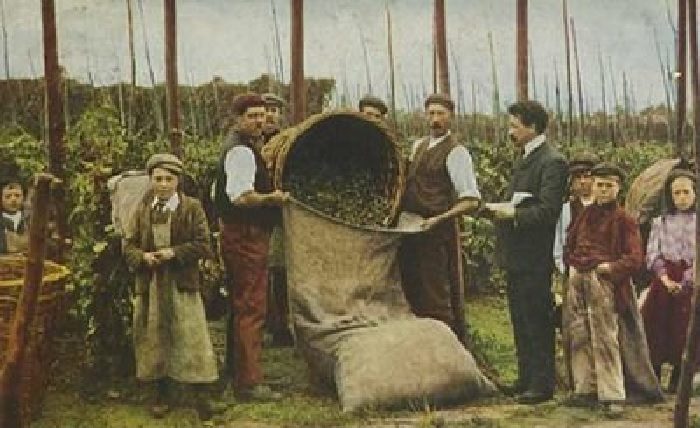Duncan Pennock’s illustrated talk on Hop Pickers, their Tokens and Rye Museum attracted a full house to Rye’s East Street museum on Thursday evening, June 8 – including some who remembered hop picking with their parents, or who own a family collection of tokens. Duncan is more than an authority on hop tokens; he is the owner of the biggest collection in the country, and was delighted when he discovered recently that Rye owns more tokens than any other museum.
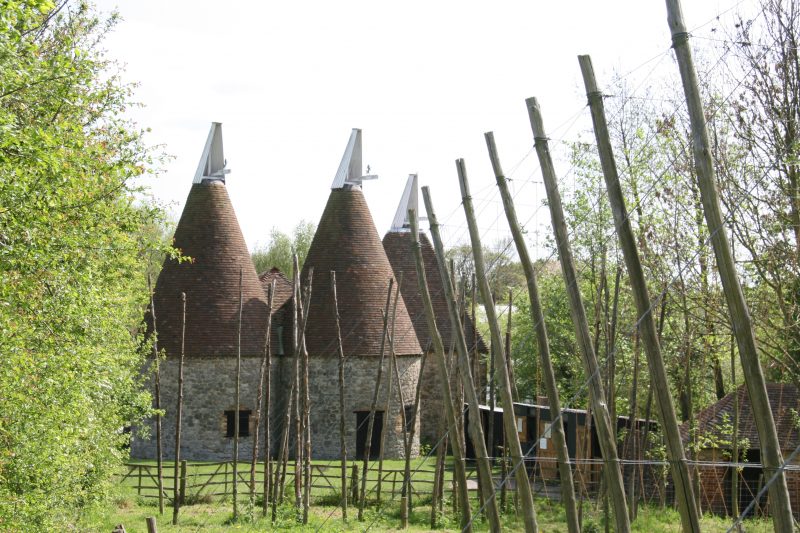
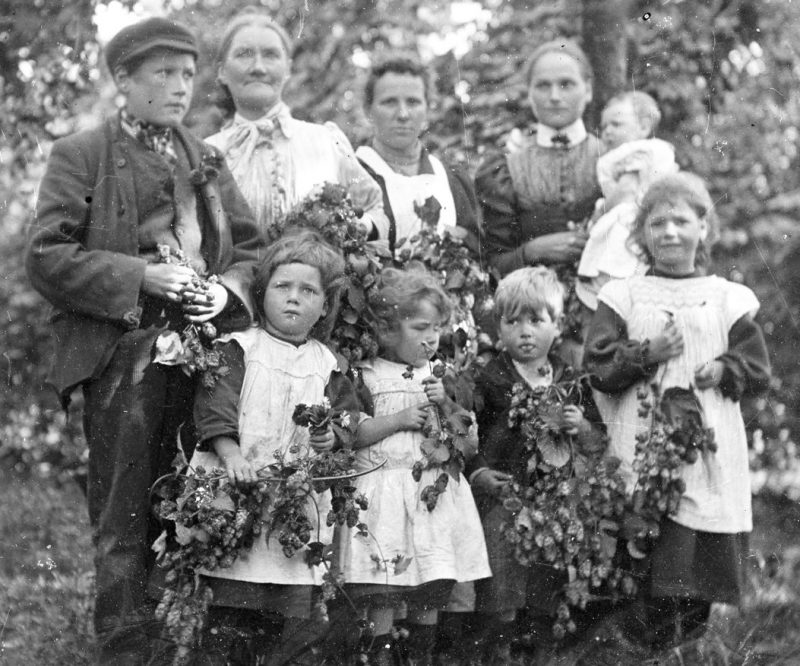
Those who know the museum will have seen the stilts in the entrance on which pickers defied gravity. Those who attended now know much more about this once conspicuous summer activity which brought thousands of the desperate-for-work from London and the coast to Sussex and to Kent every year.
The talk featured photos of hop-picking families, hoppers’ huts, bushels and bins, hooks and forks, tally sticks and ledgers, bin men, moulds and hop presses, the special reduced rate train tickets for hop-pickers, and the process of drying the hops in oast houses – and for good measure he brought along a display of selected items.
We were thus well-primed to appreciate the examples of tokens which followed.
There were lots of interesting snippets. We learned, for example, that author George Orwell in disguise once worked as a hopper and lived in a hopper’s hut, his account of the experience an attempt to refute the notion that hop picking always made for an idyllic summer holiday. Hoppers’ huts (timber then corrugated iron), were built at the instigation of missionaries appalled by the insanitary conditions of earlier makeshift accommodation and were apparently an improvement on what had gone before — but they were still overcrowded with multiple occupants (including six-week ‘temporary marriage’ couples), and outbreaks of cholera and smallpox continued to occur. (Many hoppers, too poor to buy beer, had to drink dirty water instead.)
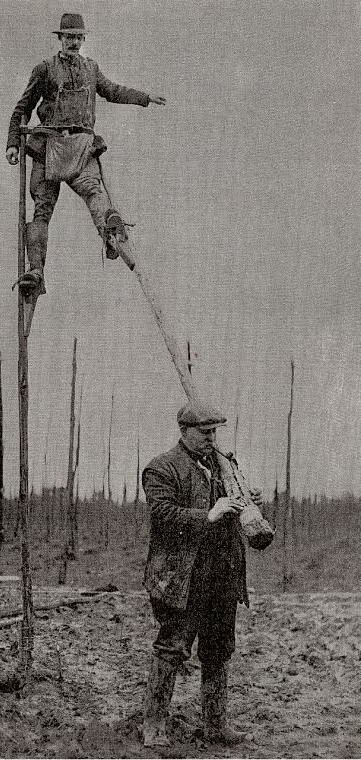
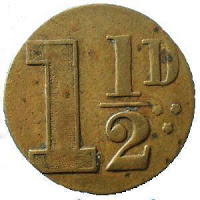
Tally sticks, made of wood and showing the number of baskets picked, were superseded by tokens, given as temporary pay for baskets filled with hops, then redeemed at the end of the season. Hop-pickers then went to the nearest town to buy new clothing, discarding garments, shoes and boots in roadways. Sometimes three or four cartloads were needed to clear away the rubbish after a Saturday’s shopping.
First used in the late 18th century in Kent, tokens were at first made of crude lead (and even paper and cardboard) but especially in Sussex they became attractive objects of copper and brass for a range of currency values (starting with 1d), made locally. It became fashionable for hop-growers to compete with one another to produce elaborate designs; we saw a 30 bushel token produced in about 1860 at Frog’s Farm, Newenden, showing two oast houses!
The hop-growing industry started to decline from about that date when the excise duty was taken off hops, and accounts began to be kept in books instead of tokens. Increasingly mechanised processes meant less and less need for pickers so that the annual influx of hop-pickers had almost ceased by the late 1950s. But metal detectors are still finding hop tokens!
Rye Museum’s Talk Series for the coming year will be announced soon. For this and other coming events see the website. In the near future we hope to announce the opening of a new exhibition on hop-picking and hop tokens.
Photos: Rye Museum and Wateringbury Remembered blogspot



